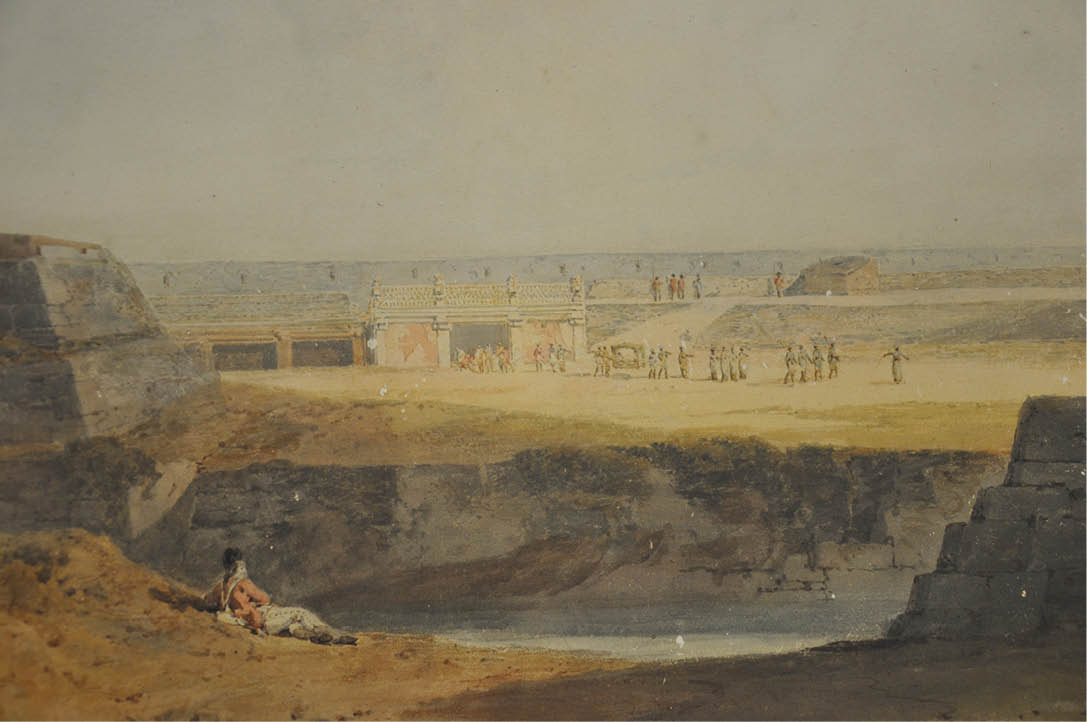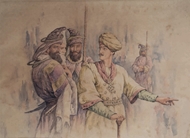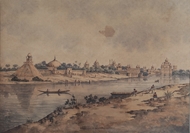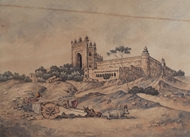![]() The Jodhpur Auction
The Jodhpur Auction
![]() The Jodhpur Auction
J. M. W. TURNER (1775 - 1851)
The Jodhpur Auction
J. M. W. TURNER (1775 - 1851)
RELATED LOTS
CONTACT US
Catalogue & Viewing
Lot Closed
Accounts & Shipping
Lot Closed
-
Details
 Details
Details
The significance of this very recent and exciting discovery lies in the fact that the series on Seringaptam is Turner's first surviving battle subject - a painting of the Battle of the Nile exhibited at the Royal Academy in 1799 is lost - and one of the very few subjects that he is known to have painted on India, including a preliminary study, thus showing the importance he attached to this commission (and presumably because Tipu Sultan was a very popular figure amongst the English and the Scots at the time). To add to this is the knowledge that very few of Turner’s watercolours are as large in size as the one presented here,besides the relevance Douglas Barrett attached to this work by gifting it to a person of the stature of the Maharaja of Pudukottai, some 160 years later, only adds further weight to its historical importance.
-
Provenance
 Provenance
Provenance
On Request
-
Literature
 Literature
Literature

Turner never visited India, but was regularly asked to make finished views of places he did not know at first hand. In later life, for example, he made watercolours of Indian subjects for Lieutenant George Francis White’s Views in India, 1838. These were based on drawings by White himself. But during his early career Turner made a point of visiting the places he was to depict, and this commission put him in the then unusual position of relying on the work of others for basic information. The view of ‘Hoollay Deedy’ is evidently based on a drawing now in the India Office Library, London, by Thomas Sydenham, and Sydenham may have supplied drawings for the other subjects as well. The view of the Siege itself, however, is very similar in general composition to an engraving after a watercolour by Alexander Allen (this drawing was on the art market in 1988).
Turner may have been in direct contact with one or other of these officers in the Indian army, who may have commissioned the set, rather as White was to do much later. It has been suggested that he was invited to execute the views by the Thomas and William Daniell, uncle and nephew who had recently been in India and were well known as recorders of the Indian scene. This seems unlikely since they would surely have wished to make their own Seringapatam set. It is curious that no record of Turner’s involvement with these popular and topical Indian subjects has survived, since they were evidently mounted and titled with an owner in view.
The composition of the present watercolour closely follows that of a colour-beginning in the Turner Bequest (housed in the Tate Gallery, London), TB CXCV – Z, which anticipates the procedures that Turner was to adopt throughout his later career when planning his watercolours: a bold, simplified design of basic colour masses, devoid of specific detail. In making his finished view, he has characteristically added appropriate figures, notably a soldier reclining on the bank of the river in the foreground, guards on the battlements in the distance, and a lively procession with a personage borne in a litter across the open space between. A few birds wheel in the sky above, and the masonry of the pyramidal structures in the foreground is more clearly defined.
It is interesting that the colour-beginning has so much in common with Turner’s lifelong practice in making preparatory studies for watercolours, since it differs materially from the only other preparatory drawing we know relating to the Seringapatam group. This is a study for the Siege subject; it exists in a UK private collection, and is in the nature of an unfinished ébauche, showing much of the architectural detail of the city – Hindu temple, mosque and fortifications - along with numerous uniformed figures of the soldiery advancing across the Cauvery river.
- Text by Andrew Wilton
FOR MORE DETAILS - REFER AUCTION CATALOGUE
-
Notes
 Notes
Notes

Viewing of this lot in London
-
Condition
 Notes
Notes
 Report on Request
Report on Request




